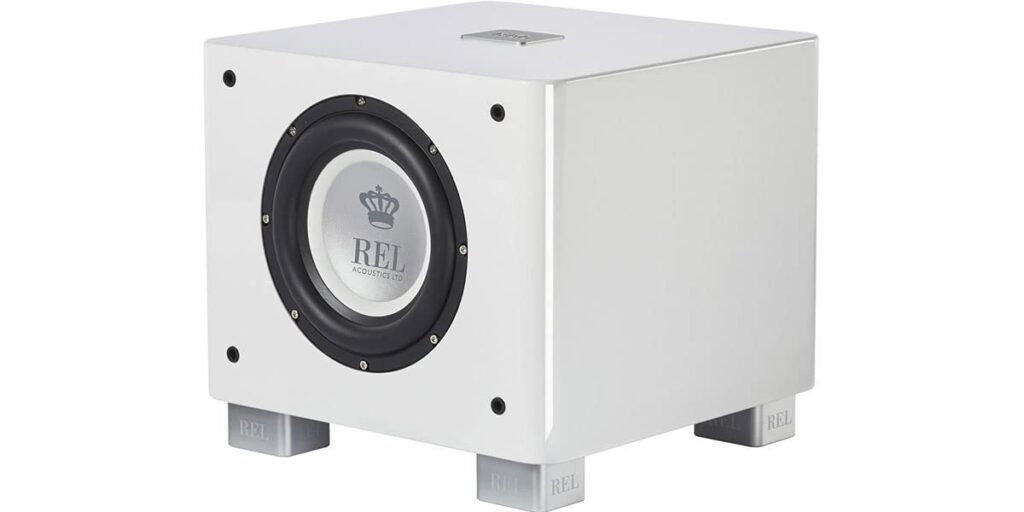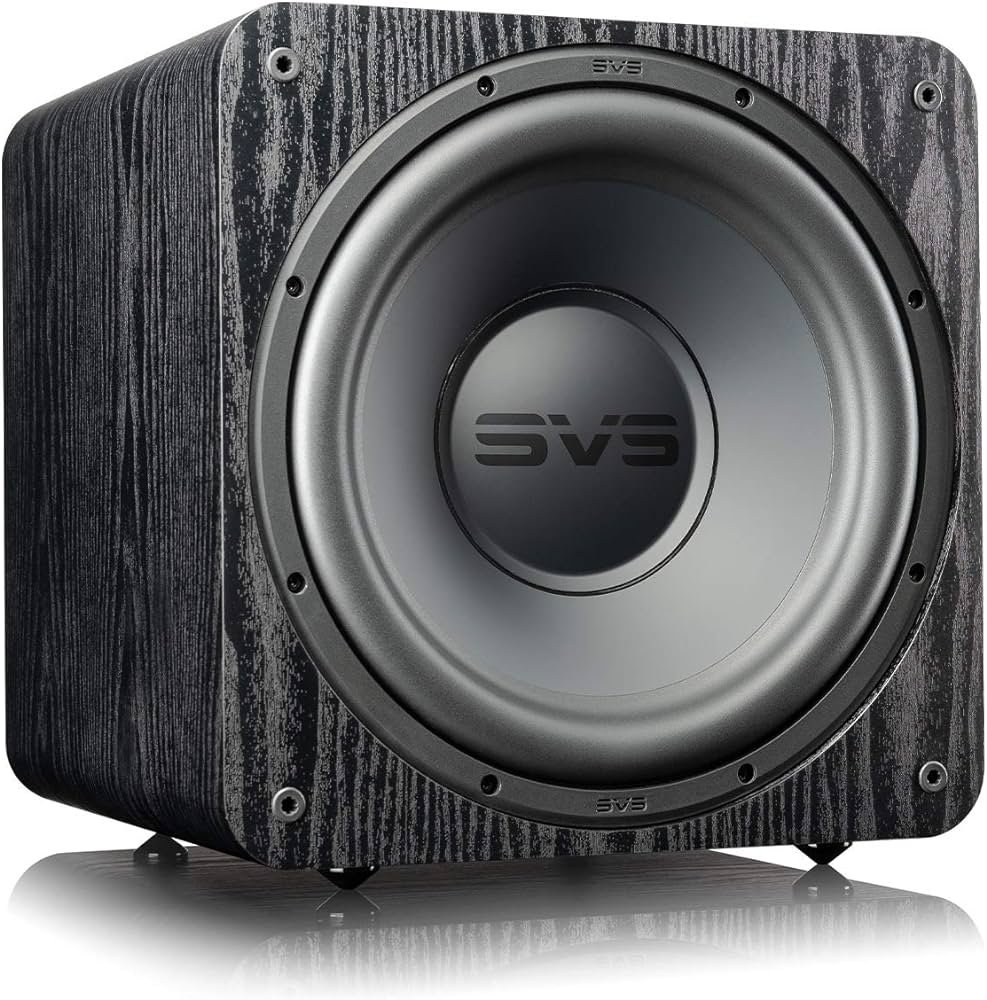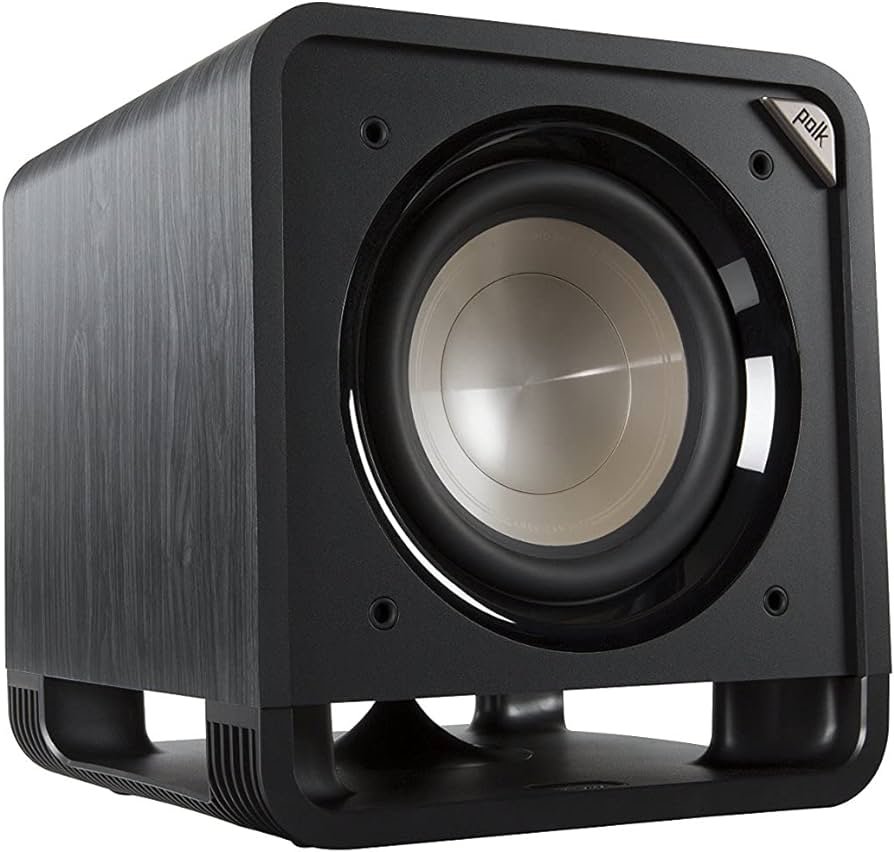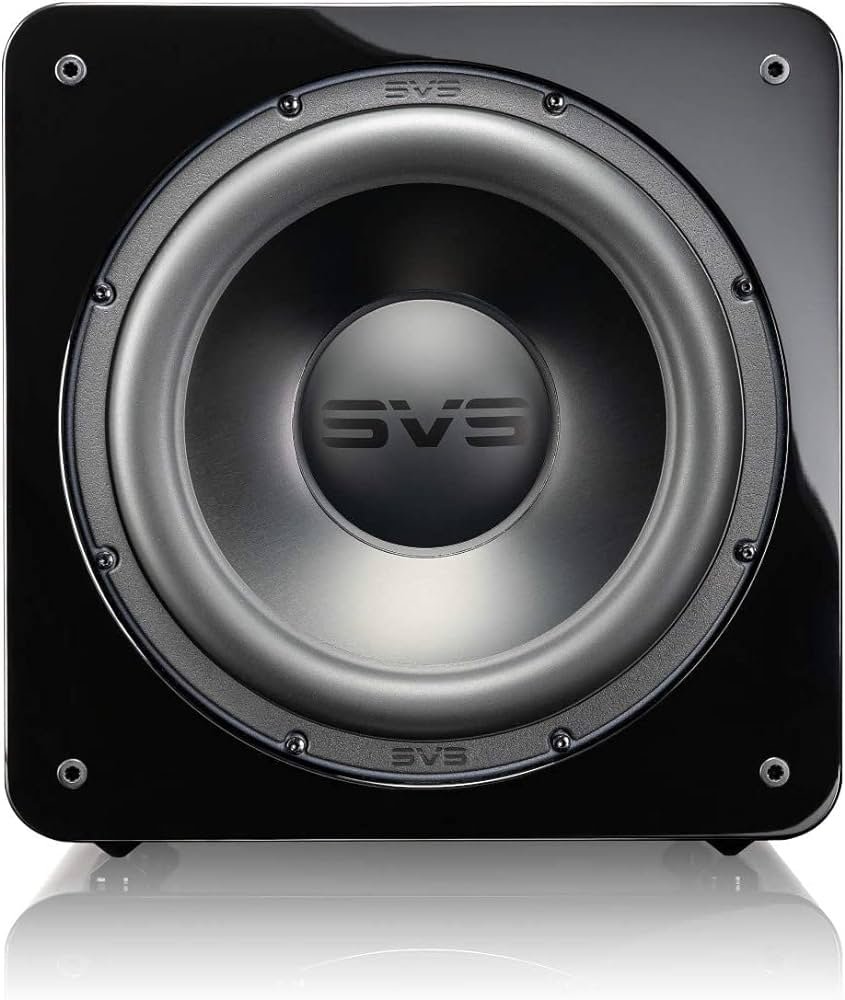Immerse yourself in the ultimate sound experience with the best subwoofers for 2-channel stereo systems, designed to bring unparalleled depth and clarity to your music. Imagine feeling every beat and bass line not just as sound, but as a physical presence that elevates your listening to extraordinary new heights.
Whether you’re a discerning audiophile hungry for the crispest highs and the deepest lows, or a music lover seeking to transform your living space into a concert hall, the right subwoofer can make all the difference. In this guide, we’ve meticulously curated a list of top subwoofers, crafted to bring your music, movies, and games to life like never before.
Get ready to unlock the full potential of your audio system, discover with DJ Techvibe sounds you never knew existed, and see why, by the end of this article, you’ll be convinced that upgrading your setup with our top subwoofer picks is the key to experiencing audio nirvana.
Quick Guide to Subwoofers
One finds a strong preference for SVS subwoofers for their ability to seamlessly integrate into any audio setup, a feat that competitors like Polk and Martin Logan sometimes struggle to match. The addition of an app for easy adjustments adds a layer of convenience and customization.
For those seeking a subwoofer that doesn’t draw attention to itself, SVS presents a compelling option. The SB-1000 Pro and SB-2000 Pro come highly recommended for use with 2-channel stereo systems, with the latter providing a higher output and deeper bass, though both are capable performers. For an affordable option that doesn’t skimp on quality, the Monoprice 10in 200-Watt Powered Subwoofer is noted for its ability to deliver nuanced bass even when paired with smaller in-wall speakers.
Achieving a perfect blend where the subwoofer enhances the audio experience without overwhelming it is key. If the subwoofer is too prominent, adjusting the volume might be necessary.
It’s noted that 2-channel setups with a subwoofer output often lack advanced bass management, making the SVS app’s ability to tune from the listening position invaluable. For those opting for a different brand, incorporating a miniDSP 2x4HD and UMK1, coupled with learning Room EQ Wizard, is recommended for fine-tuning the subwoofer’s performance to the room’s acoustics.
The importance of room interactions is highlighted, especially in the sub-bass range, suggesting that if the desired sound isn’t achieved immediately, adjustments in positioning and EQ rather than the subwoofer itself might be needed.
Ultimately, the performance of a subwoofer is significantly influenced by the room it occupies, underscoring the importance of calibration and adjustment post-installation.
Best Subwoofers for 2-Channel Stereo Reviews
1. REL T/7x (8-inch)

Arguably the premier choice among compact, high-end subwoofers on the market, the REL T/7x stands out with a bit of fine-tuning, offering:
- Impressively clear and articulate low frequencies.
- A solid, quick response with virtually no distortion when properly adjusted.
- The ability to emulate the warmth and richness typically associated with larger, premium subs equipped with superior speakers.
- Outstanding functionality, robust connections, and precise controls, delivering deep rumbles for movies and substantial depth for music.
This subwoofer includes a feature that achieves its purpose remarkably well without being too sensitive to placement. However, it’s crucial to monitor the volume settings carefully. Adjusting from your receiver or preamp too aggressively can lead to overdriving the sub, potentially causing alarming distortion and reducing the lifespan of the driver cone.
Should you find the bass and lower midrange enhancements to your reference speakers lacking, consider repositioning the subwoofer before simply increasing the volume.
The essence of a musically adept subwoofer lies in its ability to synchronize swiftly with your main speakers, minimizing lag. REL’s commitment to analog crossovers ensures a seamless blend with your system.
However, it’s worth noting that the REL T/7x may not reach the lower frequencies desired for electronic or rock music, which might limit some listening experiences.
A more substantial magnet and a sturdier voice coil could further enhance its capability to deliver intense bass without risk of distortion.
Nevertheless, for those looking to complement a 2-channel stereo system, this subwoofer is an exceptional choice. Available on Amazon for around $1000, its performance and quality justify the investment.
2. SVS SB-1000 Pro (12-inch)

The SB-1000 Pro represents a sweet spot in the market, balancing affordability, performance, and features, with its global availability simplifying the trial process for potential buyers. This approach allows users to either settle comfortably with their choice or refine their preferences for future selections.
One user, after purchasing the SB-1000 a year prior for dual purposes—enhancing both home theater and music listening experiences—has shared a highly positive review. The subwoofer’s performance exceeded expectations in delivering both cinematic depth and musical nuance.
The user’s setup included a variety of satellite speakers with a constant center channel provided by a Polk Monitor XT35, all powered by an Onkyo TX-8220 receiver. A crucial tip for leveraging the SB-1000 Pro’s capabilities is to adjust its frequency to align with the main speakers, facilitated by a control knob on the subwoofer’s rear. This adjustment is pivotal for achieving optimal audio performance.
Placement also plays a key role in the SB-1000 Pro’s integration into a 2-channel stereo setup, with recommendations suggesting a corner position, adjacent to the front speakers, for superior sound delivery. Additionally, setting the volume at a midpoint before fine-tuning to match the main speakers’ output level is advised for the best auditory experience.
For those with surround amplifiers, these adjustments are beneficial. Moreover, placing the SB-1000 Pro on a hard surface, such as a tile, especially when positioned on carpet, can prevent bass absorption by the carpet fibers, ensuring the 12″ bottom-firing woofer’s effectiveness.
In summary, the SB-1000 Pro is celebrated not just for its straightforward EQ adjustments and seamless integration into 2-channel stereo systems via the SVS app but also as a versatile addition that significantly enhances both cinematic and musical enjoyment.
3. Polk HTS 10 (10-inch)

The Polk HTS 10 subwoofer, despite its compact 10″ size and 200-watt power, delivers impressive performance that can truly enhance any audio setup when paired with a quality receiver. This subwoofer is not only affordable but also packs a punch, offering great value for its price. It boasts an aesthetic that complements a solid stereo system well, capable of adding depth to music and capable of withstanding high volume levels without faltering.
A friend of the user, having owned the Polk HTS 10 for about two years, has consistently impressed with its control, loudness, authority, and the realism of its sound output. Such is the appeal that there’s now interest in acquiring a second unit to create a dual-subwoofer setup, further amplifying its impressive performance.
The subwoofer has even become a bit of a showpiece, attracting attention from friends and family eager to experience its powerful output.
When integrating the Polk HTS 10 into a 2-channel stereo system, it’s essential to configure the front speakers to “large” settings and ensure a strong base signal is directed through the leads to the subwoofer’s level inputs and then out to the main speakers. Pairing the HTS 10 with high-end speakers capable of producing deep mid-range frequencies is crucial; otherwise, the combination with lower-end speakers may result in a disjointed audio experience, highlighting a significant gap in the sound spectrum. The HTS 10 is designed to complement high-end speakers by filling in low-range frequencies that even the best tower or bookshelf speakers might miss, ensuring a full, rich listening experience.
4. SVS SB-2000 Pro (12-inch)

The SVS SB-2000 Pro stands out as the unparalleled choice within its price bracket, a claim supported by extensive personal experience with various subwoofers, including those self-constructed. This subwoofer distinguishes itself with its ability to deliver bass that is not only tight and punchy but also capable of reaching loud volumes and low frequencies without any distortion or boominess—assuming the frequency cutoff is appropriately set.
The subwoofer’s precision and tightness are particularly impressive. It renders bass drums with remarkable punch and speed, maintaining clarity even at high volume levels. This has eliminated the previous necessity to adjust the volume of front main speakers to achieve the desired punchiness and avoid boominess.
A noteworthy example of its performance can be heard in Dire Straits’ “Money for Nothing” from the “Brothers in Arms” album, where every bass note and drum hit is conveyed with unparalleled neatness and tightness. It’s evident that the soundstage is enhanced across the board, improving the overall sound quality of the system, including the higher frequencies.
For those in the market for a high-quality subwoofer and are willing to invest in superior sound, the SVS SB-2000 Pro comes highly recommended. It not only offers exceptional sound quality but also comes with a robust warranty, a customer-friendly return policy, and is backed by a stellar reputation.
This was the deciding factor for the individual’s brother, who, after considering options from Polk and REL, opted for the SVS and has experienced no regrets with his decision.
Small or Large Subwoofer for Stereo?
Integrating a quality 12″ subwoofer into your audio setup can enhance both music and movie experiences, assuming the room has been properly treated and the system is finely tuned with an effective EQ. However, without these critical factors—adequate room treatment and precise EQ settings—a smaller subwoofer may pose less risk and be more forgiving in terms of achieving satisfactory performance.
The placement of a subwoofer in a room, along with the room’s acoustical properties, dramatically influences the sound quality of the subwoofer. Room treatments play a pivotal role in mitigating issues like ringing, while Digital Signal Processing (DSP) can adjust the frequency response at the listener’s position for optimal sound. Bass traps are essential in this setup, as they reduce ringing, thereby enabling the DSP to function more effectively and even out nulls in the sound field.
The interplay between subwoofer placement, room acoustics, and DSP is crucial. When these elements are carefully managed and harmonized, the result is a sound that is both fast and organic, proving that larger subwoofers can indeed offer superior performance. Conversely, if the setup is mishandled—characterized by limited placement options, the absence of bass traps, and lack of EQ—a smaller subwoofer might surprisingly yield a more pleasant sound.
The frequency at which room modes start to appear is determined by the length of the longest dimension of the space. For instance, in an 18 ft long room, modes begin below 31hz. In smaller rooms, this threshold frequency increases.
It’s important to note that the perceived boominess or the agility of a subwoofer is not inherently tied to its size. Instead, these characteristics are influenced by the subwoofer’s QTC (quality factor) and group delay, which are technical parameters defining the subwoofer’s response to signals.
What if You Have a Smaller Space?
Integrating subwoofers into a 2-channel stereo setup can often seem daunting, but opting for sealed subs simplifies the process significantly, making them the preferred choice for achieving good EQ and seamless integration. Sealed subwoofers are known for their straightforward setup and the ability to yield decent outcomes. However, they do have a drawback of being less efficient compared to other designs such as ported, passive radiator, bandpass, transmission line, front-loaded horn, tapped horn, infinite baffle, and others.
For those not looking to fill a large space like a basement with sound, an 8″ sealed subwoofer provides an impressive balance of performance relative to its size. For future upgrades, adding more sealed subs can enhance performance without complicating integration.
In smaller environments, the objective isn’t to overwhelm but to complement. A well-integrated subwoofer in a 2.1 stereo system should blend so seamlessly that it’s not perpetually noticeable. For most setups, a subwoofer larger than 10″ might be overkill. Many of the latest REL subwoofers, particularly the REL T7i which is valued around $1,000, receive acclaim for their musicality and versatility in both music and home theater applications. Despite its driver size, it’s not overly dominant, and tools like miniDSP allow for tailored adjustments to suit one’s preferences.
The positive reviews, such as those from HiFiplus.com, affirm the REL T7i’s suitability for music-focused systems, suggesting a consensus on its quality and performance.
Achieving optimal subwoofer placement and performance requires a bit of research and experimentation. Dr. Earl Geddes offers valuable insights into room acoustics, subwoofer placement, and setup through his free downloadable e-book.
Conclusion
In navigating the complexities and nuances of audio enhancement, this guide has ventured through the pivotal aspects of subwoofer integration, from the significance of room acoustics and precise EQ settings to the strategic placement of subwoofers for optimal sound quality. Whether sealed for simplicity and coherence or chosen for their sheer power to transform any space into an auditory haven, the journey to finding the perfect subwoofer is both an art and a science.
Armed with insights on how to marry technical prowess with aesthetic and auditory bliss, audiophiles and music enthusiasts alike are well-equipped to make informed decisions. Embracing the guidance offered, readers are now poised to explore the best subwoofers for 2-channel stereo systems, ensuring a listening experience that is as profound as it is pleasurable.
FAQ
Do I need a subwoofer for 2 channel stereo?
Music mixed for two-channel stereo is designed to perform well across various setups, not necessarily requiring a subwoofer. However, when correctly configured, a subwoofer can significantly enhance the listening experience, proving that its benefits aren’t confined to movies and surround sound content alone.
How do you hook up a subwoofer to a 2 channel system?
First, check if your amplifier comes with a dedicated subwoofer output. Next, use an RCA cable to connect the subwoofer to this specific output on the amp. If the subwoofer features only one RCA input, a standard RCA cable will suffice for the connection. Lastly, use speaker cables to link the subwoofer and your speakers, completing the setup.
Can you run a sub on a 2 channel amp?
To integrate a subwoofer into a system where the amplifier lacks a dedicated subwoofer output, you can tap into the signal from one right and one left speaker wire. If your amp isn’t designed to accept speaker-level signals directly, employing a speaker-to-line level converter is necessary. This setup allows the head unit’s internal amplifier to continue powering the door speakers, while a separate 2-way amplifier is dedicated to driving the subwoofer.
About the author

Karl Schuster
An esteemed figure in the DJ and technology realm, based in Berlin, Germany. Armed with extensive experience on the decks and a deep-rooted passion for innovation, Karl is a co-founder of DJ Techvibe. His visionary leadership aims to redefine the DJ equipment landscape, offering cutting-edge solutions for discerning DJs. With a wealth of expertise and an unwavering dedication to the craft.
